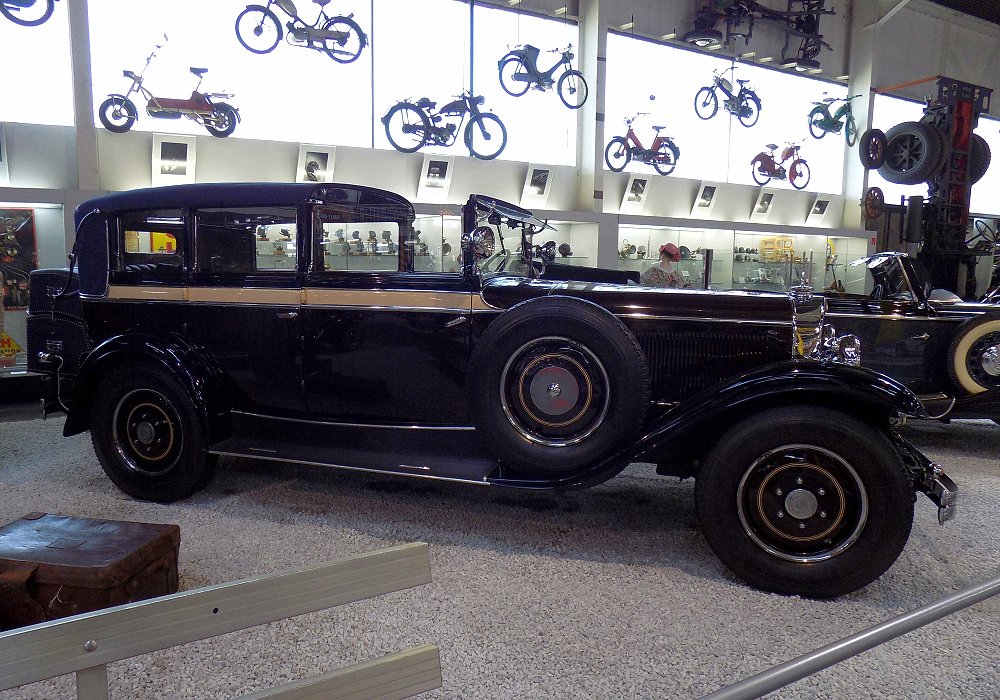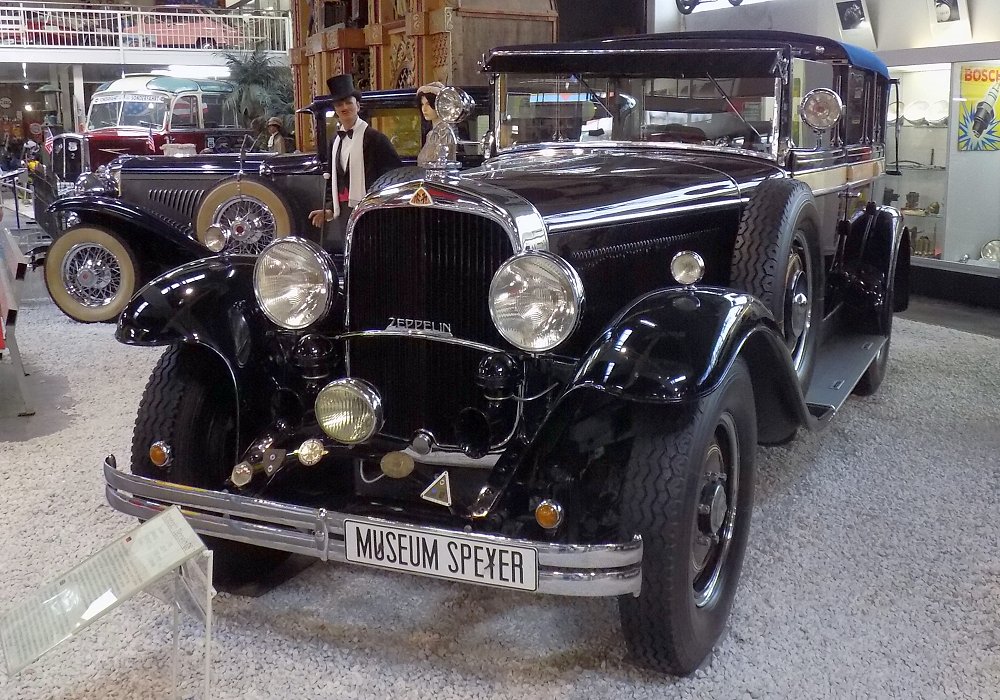Description
The Maybach DS 7 Zeppelin with coachwork by Erdmann & Rossi was one of the most exclusive, technically sophisticated and artistically refined luxury automobiles built in Germany during the early 1930s. Combining Maybach’s monumental engineering with the elegant, avant-garde design language of Berlin’s most prestigious coachbuilder, it represented the pinnacle of pre-war prestige motoring — a custom-built masterpiece commissioned only by the wealthiest and most influential clients of the era.
The DS 7 chassis, introduced in 1930, was the first Maybach to carry the legendary “Zeppelin” name. Power came from a 7.0-litre V12, an engine directly descended from Maybach’s world-famous aero-engine expertise. Developing around 150 horsepower, the V12 was one of the most refined and torque-rich engines of its time. It delivered deep reserves of power with extraordinary smoothness, allowing the DS 7 to move large formal bodies with ease and maintain high, quiet cruising speeds. The mechanical silence and effortless flexibility of the engine were hallmarks of Maybach engineering, and they made the DS 7 one of the most capable and sophisticated luxury cars of the early 1930s.
The transmission was an early form of Maybach’s dual-range system, offering a low and high driving range to improve drivability in both urban traffic and long-distance touring. Though the famous Wandler torque-converter gearbox would arrive later, the DS 7 already stood ahead of its contemporaries, providing smoother shifting and a more relaxed driving character than most large luxury cars of the era. It was precisely the sort of mechanical refinement that distinguished Maybach from even the best cars produced by Mercedes-Benz, Horch or Rolls-Royce at the time.
The chassis itself was designed to carry the heaviest and most elaborate coachwork. It used a large, rigid ladder frame and long semi-elliptic leaf springs tuned for exceptional comfort. The DS 7 was not built for sporting agility but for supreme composure. Its long wheelbase and robust suspension made it ideal for formal chauffeur-driven bodies such as town cars, limousines and Pullman saloons — exactly the types of designs in which Erdmann & Rossi excelled.
Erdmann & Rossi, founded in Berlin-Halensee, was one of Europe’s most celebrated coachbuilders. Known for exquisitely proportioned bodies, delicate chrome work and an unusually modern design sensibility, the company had a reputation for building some of the most elegant and technically sophisticated custom cars in Germany. When Erdmann & Rossi worked on a DS 7 chassis, the result was invariably one of the most striking luxury cars of the era.
Their designs for the DS 7 Zeppelin typically featured sweeping fenders, perfectly balanced rooflines, gently tapering body contours and a refined sense of proportion that emphasised prestige without ostentation. Whether configured as a Pullman-Limousine, a formal Town Car, or a magnificent Cabriolet, the Erdmann & Rossi bodywork combined stately grandeur with subtle aerodynamic modernity. Every panel was shaped by hand, each curve refined over many hours of craftsmanship, and the overall appearance projected authority, elegance and remarkable visual harmony.
Inside, the DS 7 Zeppelin Erdmann & Rossi was a masterpiece of bespoke luxury. Cabins were crafted with the finest materials available: soft leather or hand-tailored wool upholstery, richly polished hardwood veneers, deep carpeting and brilliantly machined metal fittings. Rear passenger compartments — particularly in Pullman or chauffeur-oriented configurations — featured amenities such as fold-out writing tables, vanity sets, smoking accessories, intercom communication, customised storage, elaborate lighting arrangements and even heated footwells in some commissions. These were cars built to a standard, not a price. Every detail, from the stitching of the cushions to the finish of the hinges, was executed with absolute precision.
On the road, the DS 7 delivered the dignified, effortless performance expected of a top-tier 1930s luxury car. The V12 engine moved the heavy Erdmann & Rossi bodywork with quiet authority, while the long wheelbase and compliant suspension gave the car a calm, floating ride characteristic of the period’s finest chauffeur-driven automobiles. Steering was steady and predictable, braking strong for its time, and overall refinement superior to almost every rival in Europe.
Very few DS 7 Zeppelins were built, and only a fraction received Erdmann & Rossi coachwork. Each example was constructed to individual order for an elite clientele that included industrial magnates, high-ranking officials and aristocrats. The combination of Maybach’s engineering and Erdmann & Rossi’s design made these cars among the most expensive and prestigious vehicles available anywhere in the world.
Today, the Maybach DS 7 Zeppelin Erdmann & Rossi is regarded as one of the rarest and most historically significant German automobiles of the pre-war era. It embodies the very peak of Maybach engineering and German coachbuilding artistry before the upheavals of the Second World War. Graceful, imposing, meticulously constructed and technically remarkable, it stands as a crown jewel of early 20th-century automotive history — a timeless symbol of mechanical mastery and bespoke luxury.





